Repair of a removable formwork is an important process that must be carried out regularly ...
|
|
Despite the rapid development of the construction sphere and the emergence of the latest methods ... |
High -quality roof guarantee of reliable protection of your home from the vagaries of nature ... |
Fireplace chimney: installation features
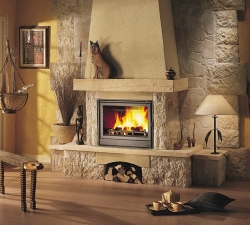
To ensure high -quality operation of the fireplace, you should correctly install a chimney in it. After all, it is this part of the design that is responsible for the removal of products of combustion of their premises. An incorrectly installed chimney entails a number of consequences, among which - the failure of the fireplace itself, the possibility of carbon monoxide poisoning or the occurrence of a fire. About how to make a chimney for the fireplace and how to install it below.
Table of contents:
- Design features and a chimney device for a fireplace
- Options for arranging a chimney for a fireplace stove
- Brick chimney manufacturing technology
- Fireplace chimney system: arrangement tips
- Installation of fireplaces and chimneys - technology
Design features and a chimney device for a fireplace
The installation of the chimney requires compliance with important technological moments, which are without fail taken into account in the process of building the stove itself. The main requirements for the chimney are its strength and reliability. Since the system is exposed to high temperatures, the formation of condenses and other fire -safety moments.

The rules for installing chimneys for each of the devices are the same. They are in its location in the warm part of the room, as there is a risk of freezing the walls in the winter. In addition, the pipe from which the chimney will be made should resist not only high temperatures, but also an aggressive environment. Since substances are formed in the process of combustion of fuel, aggressive exposure. The inside of the pipe should not delay ash or ashes on itself, it should be quite smooth.
Each chimney consists of a pipe and connecting elements that help lay it in a convenient way. As a material from which the pipe will be made, metal, brick, concrete, glass, ceramics, steel are released. Each of these chimneys has its own positive and negative sides.
But all of them require compliance with certain installation rules, namely:
1. Compliance with fire safety rules.
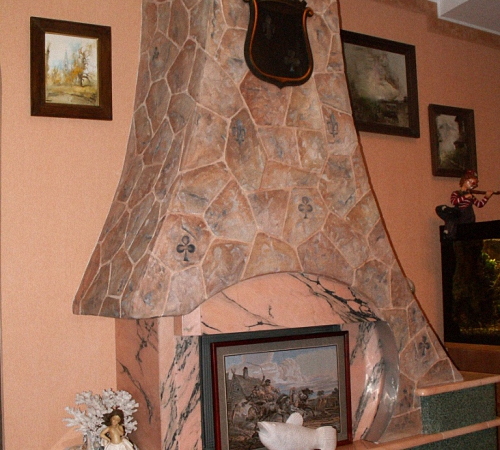
This rule should be performed during the laying of the fireplace at the ceiling, a special trim is installed between it and the overlap area and the walls are thickening. The interval between the chimney and the wall should be minimal.
2. Good traction.
It is this fact that determines the quality of the chimney. With the help of traction, it performs its main function. In order for the craving to be good, it is necessary to correctly calculate the length and diameter of the chimney. Optimal, a chimney is considered, with a length of 5 meters.
3. The tightness of the compounds.
This factor determines the quality of the chimney, since the lack of tightness in the process of its connection with an overlap or wall will lead to the fact that the gases released during the combustion of fuel will enter the room and negatively affect the health of people who are in it.
4. Lack of resistance inside the chimney.
The inner surface of the chimney should be perfectly smooth, only under such a condition, smoke, soot and ashes will not linger and accumulate in it, and the chimney will have high thrust.
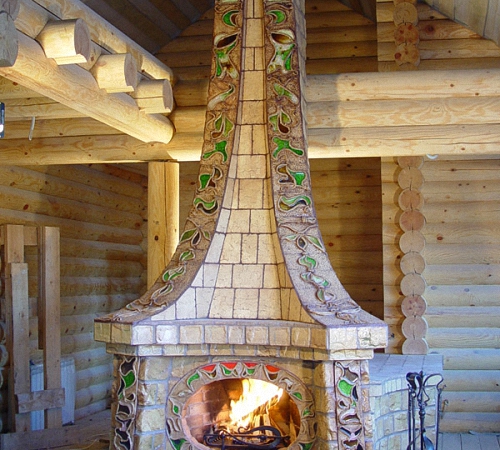
5. The ratio between the chimney and the type of fuel used.
Depending on what fuel is used in the fireplace, the material should be selected for the manufacture of a chimney.
6. A high level of smoke temperature, which is located in chimney channels.
If this rule is neglected, then condensate forms on the walls of the chimney, which will destroy its inner surface. The chimney should be characterized by the minimum number of vertical partitions.

Options for arranging a chimney for a fireplace stove
We offer to get acquainted with the main options for chimneys that are equipped under the stove:
1. A brick chimney is characterized by a rather attractive appearance. He is in perfect harmony with the fireplace if he is also made of brick. The cost of such a chimney is equal to the average, but its efficiency is quite low. The surface of the brick has roughness, and uneven areas are formed between the joints in which soot accumulates. Caring for a brick chimney is quite complicated, inside it will require the installation of a special steel liner, providing a good discharge of combustion products. The easiest way to install the chimney from steel or ceramics, and then linen it with brick.
2. Stainless chimneys for the fireplace are an excellent option for arranging a smoke exhaust system. The chimney made of stainless steel perfectly tolerates high temperatures and an aggressive environment, in addition, this version of the chimney is stable before corrosion, which is especially important, since there is a risk of condensation. The cost of such a chimney is extremely high, however, the effectiveness of its work costs the money spent on it. This chimney has the form of a pipe that has an internal and external contours, between which the insulation is located. This chimney does not load the design of the fireplace, as it has a fairly low weight. It is possible to make such a stainless steel chimney, however, this savings are inappropriate, since the stainless steel is less stable before high temperatures and chemical influences.
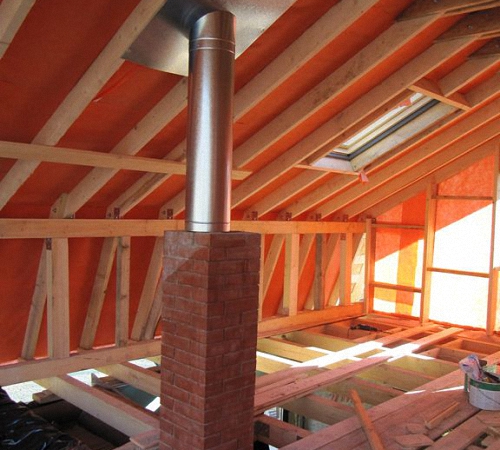
3. The design of the chimney of the fireplace made of ceramics is highly durable. For the installation of this chimney, special skills or experience are not needed. Due to the complexity of the pipe device, it is characterized by high thermal insulation and a long service life exceeding 25 years. The composition of the ceramic chimney has a three -layer system, namely:
- internal ceramic liner;
- external lightweight concrete blocks;
- Thermal insulation lining installed between the above layers.
4. The installation of fireplaces and chimneys made of glass is particularly difficult and high -cost. Although the appearance of the structure is spectacular. Among the positive qualities of this material used for the manufacture of the chimney, it should be noted:
- Absolute resistance before corrosion;
- stability before heating and moisture;
- excellent performance;
- attractive appearance;
- Providing good traction.
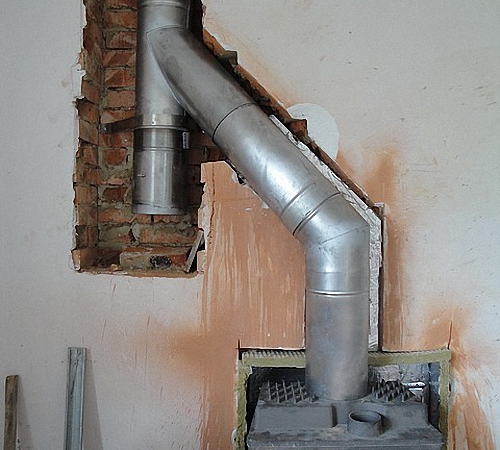
Brick chimney manufacturing technology
The fuel used in the fireplace emits a lot of heat, and therefore, the material from which the chimney is made should be heat -resistant. A great option would be to build a brick chimney. We offer to familiarize yourself with the instructions for performing these work:
1. For the manufacture of such a chimney, the presence of a nozzle pipe is required, which is a continuation of the exhaust opening of the fireplace structure. Please note that the laying of brick indoors should be carried out using a solution, which includes sand and cement.
2. First, you need to lay out the main part of the pipe consisting of three rows of brick. Please note that the diameter of the chimney is selected in the ratio with the fuel used for heating the stove and the power of the fireplace itself.
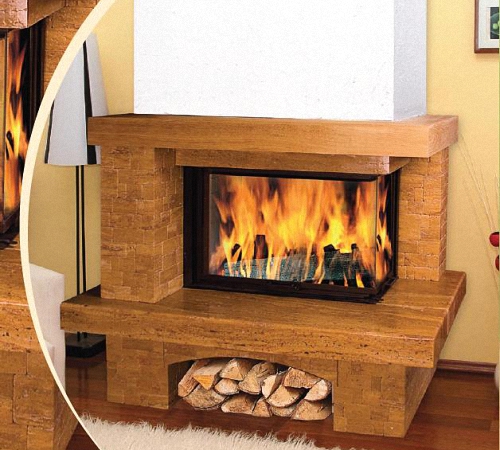
3. In the area in which the chimney is in contact with the ceiling, it is necessary to equip fire protection, in the form of a thrust. In order to expand the pipe, you need to remove the brick to the fourth part of its length. The expansion should be such that it is easy to penetrate the ceiling.
4. The minimum thickness of the site on which the flush is located is 50 cm at a smaller size, you should take care of laying the expansion of the chimney system using sheet asbestos or any material that is not prone to ignition and combustion.
5. After the overlap in the attic is installed, the arrangement of the crate is arranged, which is located on the roof. Next, the element is made in the form of the main riser.
6. Another fragment of the extension will be a street otter located outside the building. Its main function is to ensure protection against penetration into the house of atmospheric precipitation. It is a kind of insulator and protection of the room.
7. Keep in mind that water and cement should be added to the solution used to work outside the room.
The calculation of the chimney for the fireplace should be carried out primarily in relation to the power of the furnace in the fireplace. In addition, an important element of a fireplace made of brick is a tender. It becomes very difficult to calculate, since at the same time, the angle of inclination of the roof should be taken into account, which is individual for each of the roofs.
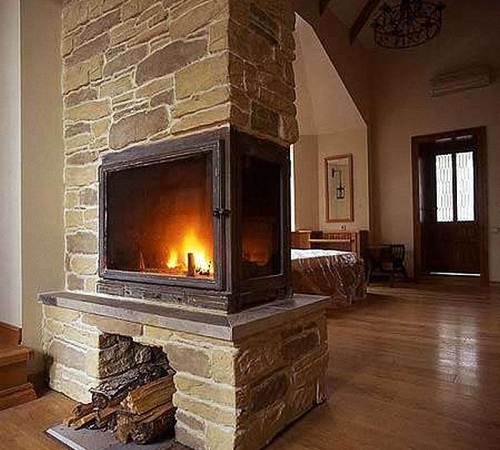
To ensure high -quality protection against atmospheric exposure, you should take care of the arrangement of a metal apron that will overcome the chimney. Its end parts are bent and become invisible under the otter.
In order to avoid the appearance of stagnation and accumulation of water on the otter, it is necessary to make inclined slopes in its corner areas, which are plastered using a plaster solution based on cement.
After the external expansion is made, it is necessary to take care of the arrangement of the main riser. In addition, to improve the presentability of the appearance of the chimney, it is recommended to build a brick head on it.
In conclusion, the cap is arranged, which will protect the chimney from the wind and various kinds of atmospheric influences. It is best to choose an umbrella in the form of a deflector.
Fireplace chimney system: arrangement tips
If the house is planned to arrange a fireplace, then you should think about this at the stage of its design. Thus, there will be no problems with installing the chimney. In addition, the walls and ceiling through which the chimney will pass should be made of non -combustible materials.
When choosing the location of the chimney, it is better to give preference to warm sections of the house that is not inclined to freeze. However, if the chimney is still exposed to frost, then it should be well -insulated.
The smaller the interval between the ridge and the chimney, the less its length necessary for the removal of gases. The size of the chimney for the fireplace, namely, its diameter, is selected in such a way that it coincides with the size of the pipe responsible for the removal of smoke.
In case of non -compliance with this condition, there will be a violation of the tightness of the connection, normal thrust will be absent and the chimney will not be able to function normally. The minimum chimney size in its length is 400 cm.
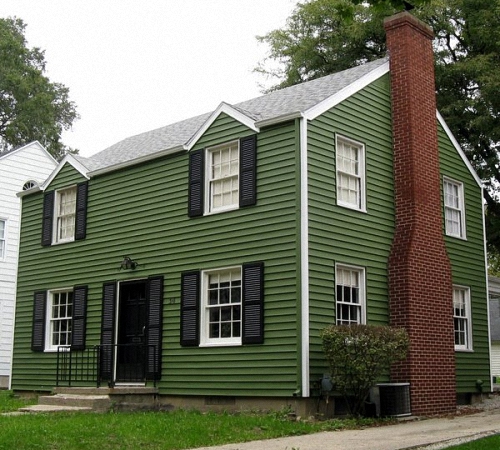
Installation of fireplaces and chimneys - technology
We offer to familiarize yourself with the option of installing a chimney made of steel. Before its installation, you should take care of installing a fireplace furnace. It should be installed on supports in the form of legs, in their absence, it should be made from independently using metal, brick, stone and other non -combustible materials.
The distance between the firebox and the wall should be at least 15 cm, taking into account the thermal insulation of 5 cm.
Keep in mind that the wall that adjoins the fireplace should be heat -insulated. For these purposes, basalt or foil wool is suitable. In addition, the option of using high -quality mineral wool, stable in front of high temperatures, is possible.
After installing the furnace, it is necessary to install plumbing, which will help to determine the location of the chimney. When the firebox is located on a metal stand, it should be covered with fire resistance.
After determining the place of installation of the furnace and its exact fixation, work begins on the installation of fireplaces and chimneys. To begin with, all internal areas in the form of seams are treated with sealant. Further, the chimney is assembled in parts, starting from below. When joining two elements, the junction of the joint should be treated, and then covered with aluminum tape.
Keep in mind that the upper pipe should be included in the internal, in no case, do not violate this rule. This will lead to a violation of the integrity of the main structure. In addition, condensate masses will not fall on the insulation.
To fix the outer circuit, rivets are used, which are sealed with tape based on aluminum. In the places of the jokes, an additional layer of insulation should be installed, which will protect the outer part of the chimney from overheating.
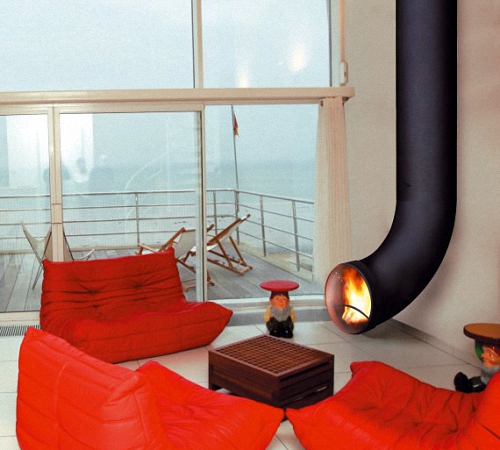
In fireplace furnaces, the installation of chimneys is also carried out. Here, due attention should be paid to its correct fixation. To fix the pipe, the outer part of the chimney is fixed using rivets. Next, the clamp is fixed on the surface of the ceiling, special bolts or corner.
It is the clamps that take on the entire load from the chimney and hold it in the right position. In the process of attaching the chimney, one should take into account such a factor as the thermal expansion of steel in the process of exposure to high temperature on it.
To compensate for this process, the lower part of the chimney is subject to installation of a special flexible element. In its absence, the arrangement of a small backlash that compensates for the expansion of the metal will be required.
If the pipe is too hard, the lower body will move and deform and the chimney will have to be launched or replaced.

I read your article and very
I read your article and was very interested in a stainless steel chimney with a heater. As I understand it, we are talking about a chimney from a sandwich pipe. I would like to see more information about this design. I found it correctly to collect such a chimney at http://kamin-maker.ru/dymokhody/dymohod-iz-sendvich-trubiraem -I -UTE ... It turns out, despite the fact that there is a heater inside the pipe, condensation still appears and it needs to be additionally insulated on the outside. And a very important fact, such a chimney should be at least 5 meters, it is important to take this into account when choosing this device.
About stainless steel
Read about stainless steel carefully what you wrote ...
Is that good and is it bad?